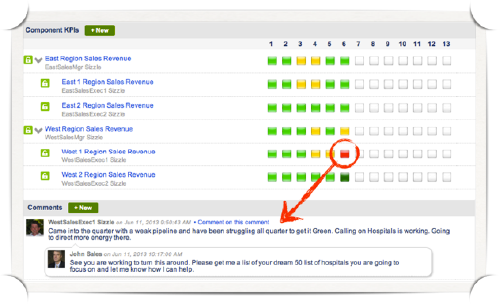If strategy is deciding what to do, execution is all about making it happen. It’s the follow through. The main requirements for successful execution are:
1. Clear goals for everyone in the organization, that are supportive of the overall strategy
2. Measuring progress toward those goals on a regular basis
3. Clear accountability for that progress
Those are the basics. Beyond that, good execution requires having a “systematic way of exposing reality and acting on it,” argue Larry Bossidy and Ram Charan in the book “Execution” Most organizations, they say, don’t face reality very well. It’s the manager’s job to force his organization to face reality, and then to deal with it.
At Frederique Constant, we use Rhythm Systems to help our teams execute our plans and accelerate our growth. Rhythm is particularly useful to align our multiple levels of management in Switzerland, USA, Germany and Hong Kong.
Frederique Constant grew sharply worldwide and we restructured our organization two years ago. All senior managers worldwide report to the Management Team in Geneva. Subsidiary Sales Directors, Operations Directors and CFOs report to their counterparts in our Geneva HQ. Weekly reviews via web and video conferencing systems have created a tight worldwide organization.
The weekly meeting is a critical success factor in achieving our plans at Frederique Constant. Taking the time to prepare for weekly meetings helps to ensure our discussions are focused on solutions to items rather than mere status updates. We ask all managers to prepare the weekly meeting with these steps:
- Review your week and update your status.
- Prepare an action plan for any priorities not on target to be completed.
- Capture your victories from the week – what went well?
- Visualize next week – What does success look like?
- Looking into next week – what are 3 priorities?
- Stuck – anything you are stuck on and could use some help from the team.
Weekly meeting agenda contains 4 easy to follow steps to having a successful meeting
Step 1: Talk about the company’s plan
- Review the company’s priorities: celebrate victories and discuss solutions to any priorities that are not on target.
- Review company KPI’s and discuss any action plans for those not on track.
- Who What When – Decide who is responsible for what and by when.
Step 2: Each team member shares their plan for the week.
- Victories from last week
- Review their Who What When from last week – what got done?
- Top 3 priorities for the week
- Stucks
- Summarize what a successful week is for you.
Step 3: Review Who What When list
Step 4: Discuss customer feedback
Running solid weekly meetings is critical to successful business growth. Read more by our Coach Patrick Thean.


